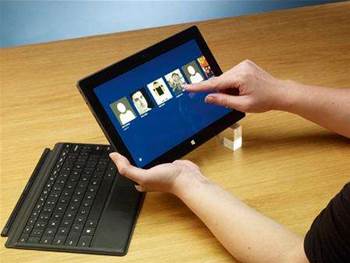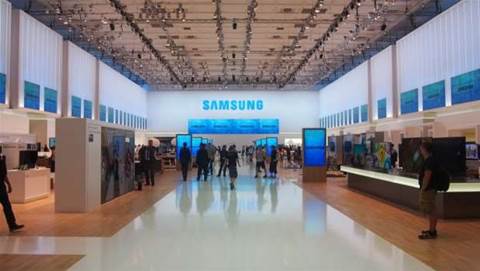Windows will once again run on ARM chips after Microsoft and Qualcomm announced they would port the operating system to the silicon vendor's Snapdragon range of processors.
The partnership was announced at Microsoft's Windows Hardware Engineering Community (WinHEC) conference in Shenzhen, China.
Microsoft Windows and Devices head Terry Myerson said the company turned to Qualcomm's Snapdragon chipset to bring Windows 10 "to life with a range of thin, light, power-efficient and always-connected devices".
The two companies promised Snapdragon-powered PCs that can be designed to support 32-bit x86 Windows software and Universal Apps, which would include Microsoft Office, Windows 10 gaming titles and Adobe Photoshop.
Fanless computers featuring long battery life, gigabit LTE cellular connections as well as Windows 10 features such as the Hello facial recognition authentication, touch-screens, and pen support will appear early next year.
Microsoft's most recent attempt at producing an ARM-based mass-market mobile device running Windows, the Surface RT, used the 32-bit quad-core Nvidia Tegra 3 processor and was universally seen as a fiasco.
The ARM-specific Windows RT operating system limited the tablet to a small number of Metro apps from Microsoft Windows Store, as it was incompatible with x86 Windows apps.
Users also complained about Surface RT having poor performance. Microsoft was sued by shareholders after taking a loss of US$900 million over poor sales for the device.
Despite this, Microsoft launched a second ARM-based Windows RT tablet in 2013, the Surface 2, which was prone to overheating and could not run traditional Windows desktop programs.
ARM play for scale-out data centre servers
Qualcomm has also readied ARM server chips with integrated network and storage interfaces aimed at white-label data centre server manufacturers.
ARM chips in general offer lower performance per core than processors based on Intel's x86 architecture, but use less power and run cooler.
This makes it possible to add a large amount of processor cores per chip without generating excessive heat for massively scaled-out servers.
Made with a Samsung 10 nanometre fabrication process, the Qualcomm Centriq 2400 is a system-on-a-chip design that will compete against Intel parts that currently dominate the server market.
Qualcomm's 64-bit Centriq 2400 can have up to 48 cores. It uses the company's Falkor custom ARMv8 processor core that Qualcomm says is optimised for server workloads.
However, Qualcomm did not provide any further technical details, power consumption or performance figures for the Centriq 2400.
The new chip is ARM Server Base System Architecture (SBSA) compliant, Qualcomm said, meaning software that runs on ARMv8 servers such as Linux, Java, and Apache Spark will run on Centriq 2400 systems without changes.
Qualcomm isn't the first company to enter the ARM server chip market: United States silicon vendor Calxeda announced processor designs with up to 480 cores as early as 2011, but the company went bust two years later after running out of money.
Intel competitor AMD has also dabbled in the ARM server market with the 64-bit Opteron A1100 design, but has since moved back to the x86 architecture, with the Zen series of processors scheduled to arrive next year.
The Centriq chip is currently being tested with vendors, with commercial availability scheduled for the second half of next year.




.png&h=140&w=231&c=1&s=0)





















